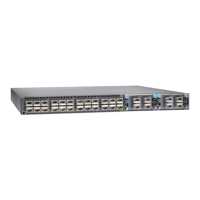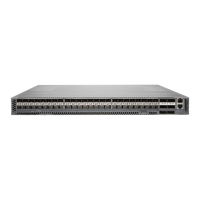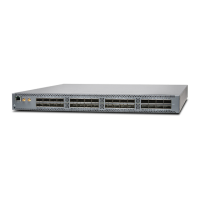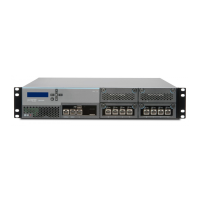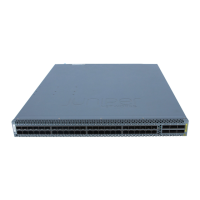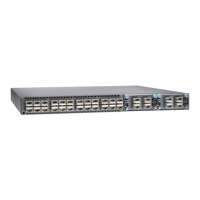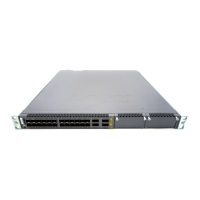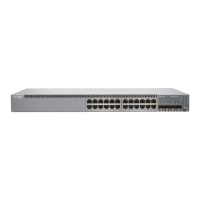6. Place the transceiver in the antistatic bag or on the antistatic mat placed on a flat,
stable surface.
7. Place the dust cover over the empty port.
Related
Documentation
Installing a Transceiver on page 133•
Connecting a Fiber-Optic Cable
Before you begin connecting a fiber-optic cable to an optical transceiver installed in a
device, ensure that you have taken the necessary precautions for safe handling of lasers
(see Laser and LED Safety Guidelines and Warnings).
To connect a fiber-optic cable to an optical transceiver installed in a device:
WARNING: Do not look directly into a fiber-optic transceiver or into the ends
of fiber-optic cables. Fiber-optic transceivers and fiber-opticcables connected
to transceivers emit laser light that can damage your eyes.
1. If the fiber-optic cable connector is covered with a rubber safety cap, remove the cap.
Save the cap.
2. Remove the rubber safety cap from the optical transceiver. Save the cap.
3. Insert the cable connector into the optical transceiver (see Figure 58 on page 138).
Figure 58: Connecting a Fiber-Optic Cable to an Optical Transceiver
Installed in a Device
4. Secure the cables so that they do not support their own weight. Place excess cable
out of the way in a neatly coiled loop. Placing fasteners on a loop helps cables maintain
their shape.
CAUTION: Do not bend fiber-optic cables beyond their minimum bend
radius.An arcsmallerthan a few inches in diametercan damagethe cables
and cause problems that are difficult to diagnose.
Copyright © 2017, Juniper Networks, Inc.138
QFX3500 Device Hardware Documentation
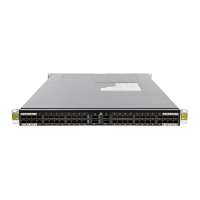
